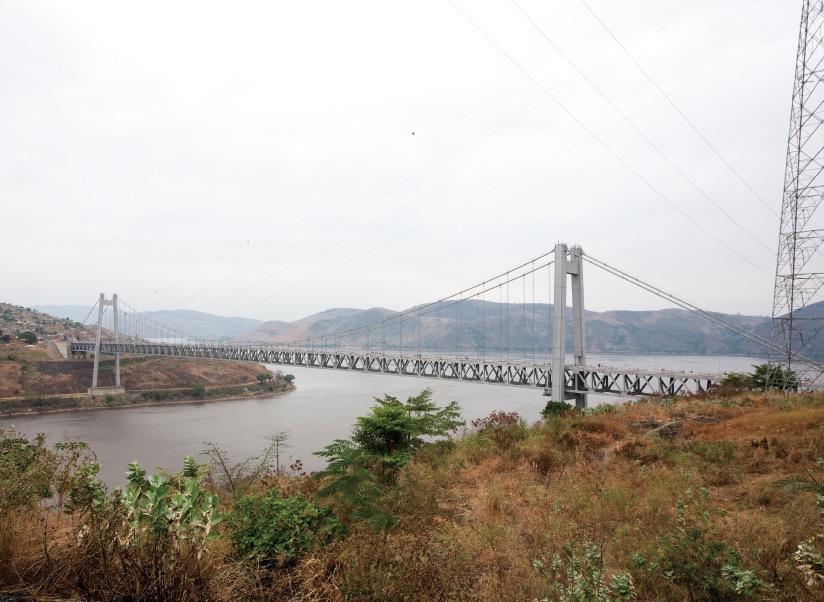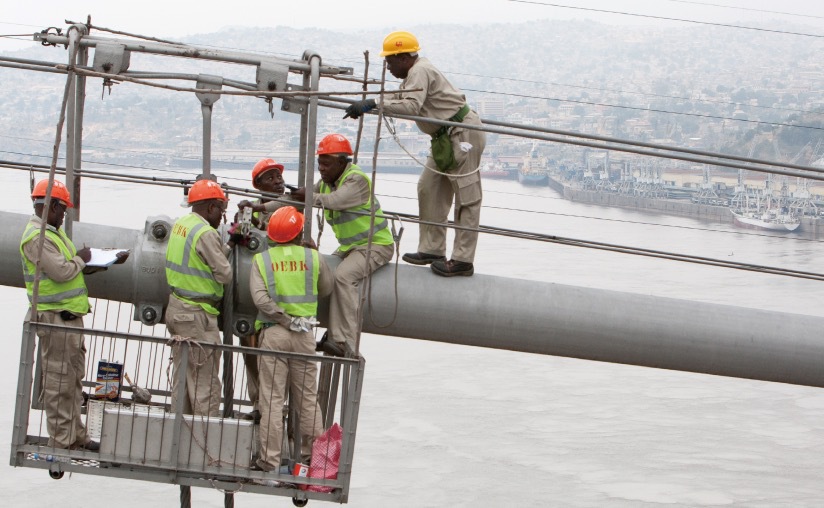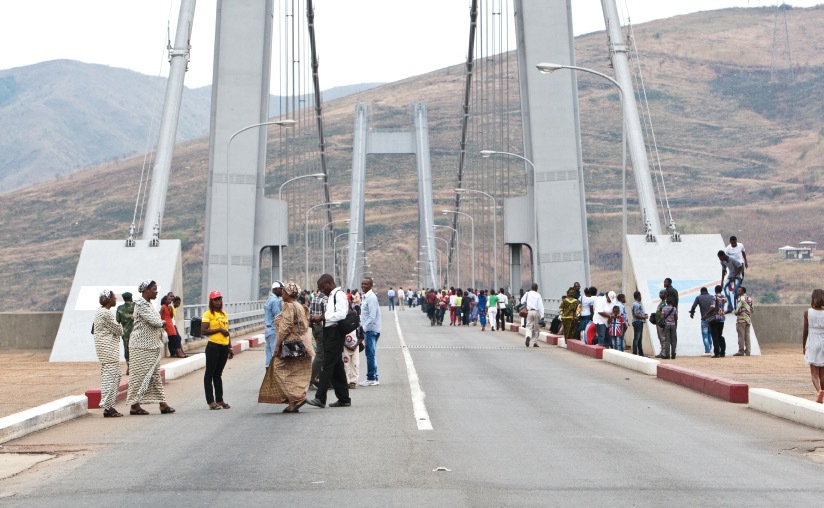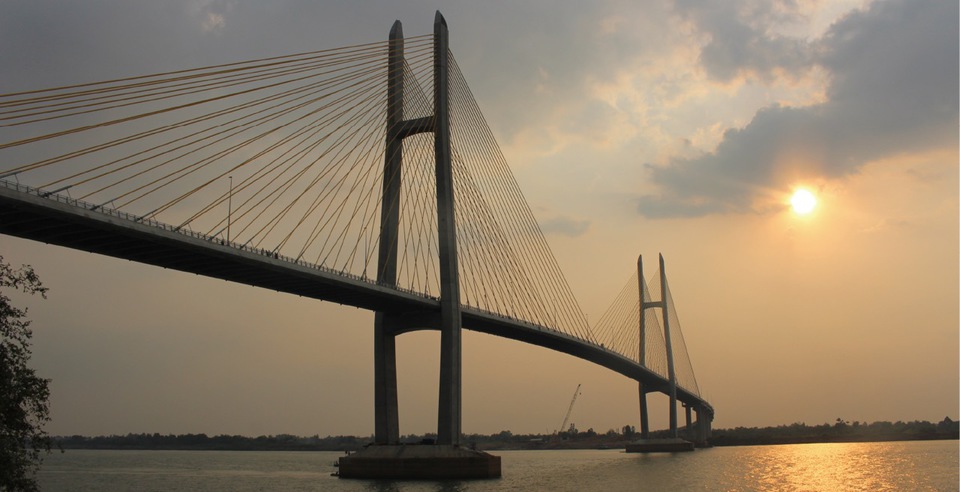Japan commenced its program of Official Development Assistance (ODA) in 1954, less than 10 years after it was defeated and left in ruins at the end of World War II. A major characteristic of Japan’s ODA is its focus on support for building the economic and social infrastructure essential for economic growth. The construction of bridges is a prime example. Some 2,000 bridges have been built in developing countries with assistance from Japan, and the amount of funds provided is on the order of JPY 1 trillion (USD 8.3 billion), including about JPY 700 billion in ODA loans and JPY 250 billion in grant aid. Bridges improve people’s living conditions and facilitate transport, and they also play a major role in strengthening regional ties across national borders.
The Democratic Republic of the Congo (formerly Zaire) is where the Congo River, with the world’s second-largest basin area, flows into the Atlantic. The port of Matadi, accessible to ocean-going ships, has grown up on the banks of the Congo 150 kilometers (93 miles) from the mouth of the river. Nearby is the Matadi Bridge, a 722-meter (2,370-foot) suspension bridge.
The Matadi Bridge, which was completed in 1983, made use of Japan’s world-class suspension-bridge technology and financial assistance from Japan. It serves as a link across the Congo for National Road No. 1, which leads to Kinshasa, the country’s capital. Over the three decades since its completion, the country has experienced two civil wars, but the bridge has been maintained by engineers of the Organization for Equipment of Banana-Kinshasa (OEBK), who have referred to the maintenance manual left by the Japanese who were involved in the construction project. Even today the bridge plays a major role as a key piece of the country’s infrastructure.
A recent project was the construction of Tsubasa Bridge in the vicinity of Phnom Penh, capital of Cambodia. The opening ceremony for this 640-meter (2,100-foot) bridge was held on April 6 this year. The construction cost of about JPY 12 billion (USD 100 million) was covered almost entirely by grant aid from Japan. As the completed bridge looks like two birds with their wings spread, it takes its name from the Japanese word for wings, tsubasa, expressing hope for the further development of the relationship between Japan and Cambodia.
The bridge crosses the Mekong River where it had cut National Road No. 1, Cambodia’s most important arterial road. Previously the river had to be crossed by ferry, and even with three ferries operating on full schedules, the waits at peak periods were seven or eight hours, and there was no ferry service at night. The opening of this bridge has made it possible to cross the Mekong freely at any time of day or night. This has dramatically improved the functioning of the arterial road, and it also makes it much easier for local residents to get to destinations like schools, workplaces, and hospitals.
Cambodia’s National Road No. 1 is part of the Greater Mekong Region Southern Economic Corridor connecting Ho Chi Min City (Viet Nam), Phnom Penh, and Bangkok (Thailand), and the opening of Tsubasa Bridge is expected to promote economic development not just within Cambodia but also in the entire Mekong region and to promote ASEAN connectivity.
In the countries where they are located, the Matadi Bridge and Tsubasa Bridge are symbols of friendship with Japan. We earnestly hope that the bridges will continue to serve the people of their countries on into the future.
The Matadi Bridge in the Democratic Republic of the Congo. The structure is built to allow a railway to run underneath the roadway. (©Shinichi Kuno/JICA)
OEBK employees maintaining the bridge. From March 2012 through March 2015, Japan implemented a project supporting capacity development for bridge management. (©Shinichi Kuno/JICA)
The Matadi Bridge has become a tourist attraction for its robust, graceful appearance as a suspension bridge and for the views of the mighty Congo River flowing below it. (©Shinichi Kuno/JICA)
Tsubasa Bridge in Cambodia. The construction work was carried out in the face of many challenges, including Cambodia's worst-ever flooding in 2011. (©JICA)




































































































































